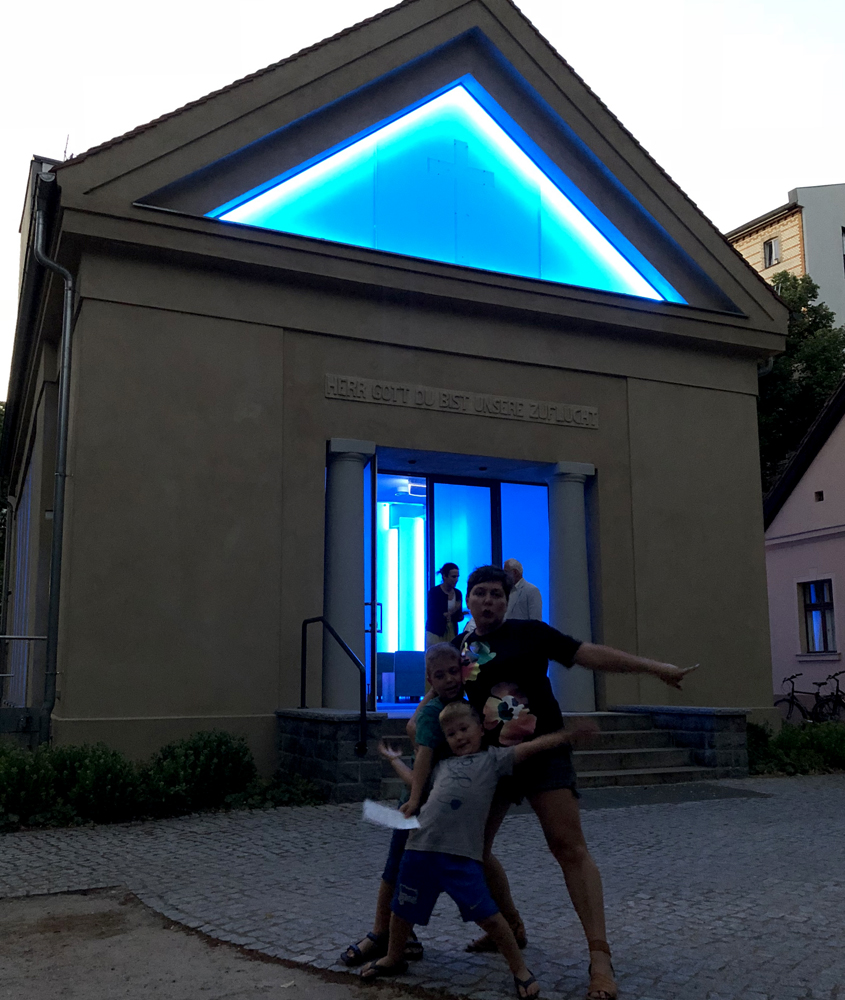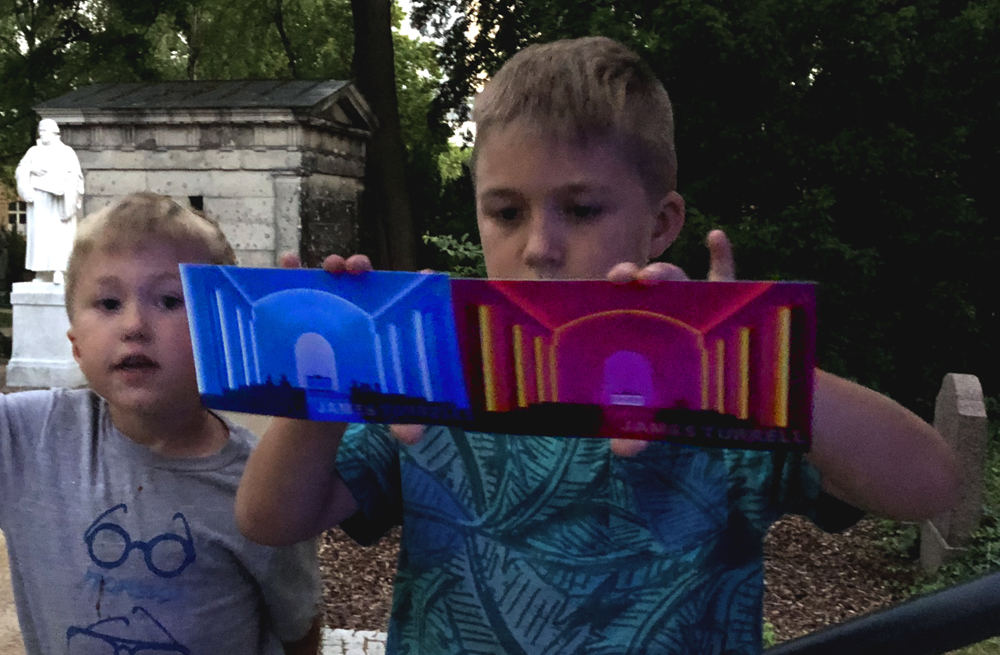
I’m not a huge fan of taking my children on guided tours of artworks, especially large groups of adults. Adults and children look at art differently, and the institutions usually want my children to act more like adults. I’ve learned over the past few years of writing this blog that I prefer to look at art through my children’s eyes, even if it means making some compromises. Adults can sometimes do all the “seeing” of the artwork inside their head. It can be a solitary and intellectual experience that feels more stoic than consequential. My children don’t do it that way, and I’m learning to glean the best of their perception, curiosity, and discernment. Our tour of James Turrell’s installation at the Dorotheenstädt Cemetery in Berlin is designed for adults. It takes place at sunset (which is late in the summer), includes a 30 minute lecture, and about 30 more minutes to view the entire light sequence. The evening we attended there were 48 adults and my two children filling up all the pews. During our experience, I felt the pressure to look at art like an adult. I didn’t realize until the end that the curator’s thought these adults were looking at it all wrong.
Dorotheenstädt Cemetery in Berlin was established in 1762, and Turrell’s installation was commissioned during the renovation in 2015. James Turrell is an American Artist who makes ambitious sky spaces, craters, gardens, and installations that affect our perception of space and color (thus questioning your own awareness of presence). One of his signatures is the use of indirect light. Inside the chapel, you see light but you never see the source. The chapel is filled with different colored lights, slowly moving across curved or translucent surfaces. I told my kids they were going to a “light show.” After an hour and a half at the cemetery, they asked when the light show was going to begin. It’s more understated than most of the photographs might demonstrate.

There are three different light sources in play during the sunset sequence: the last light of the day, the fading light of life, and the transmuting glow of the installation. Remember, you are surrounded by buried bodies at sunset. The moment is about lights going out. As the curator points out in the lecture beforehand, Turrell is creating a way for us to feel the embodiment of the resurrection. Or as J. Anderson describes in his article “Another Light,” this artwork is a place to “explore how radically our perception of the waning light of this day might be seen in another light.” For one hour, we watched the most subtle light show ever in hopes of feeling the comfort of a presence that is not present.
But all I really remember is that my kids were having a lot of fun spying on the cemetery cats and enjoying the crisp air of twilight outside while I tried to be as statuesque and meditative with the other 47 adults in the room. When we were closing up the cemetery with the curators, I learned that they were both surprised by how respectful my children behaved and by how stoically this audience behaved. They commented that most audiences get up and walk around after the lecture. They go to the center of the aisle and stare into the infinity wall. They walk outside and re-approach the light at different moments. So I forced my children to be still and quiet like the adults for nothing. My only travel advice is to go see this ambitious artwork, but don’t sit still.



Read about the other places we have seen Turrell here.